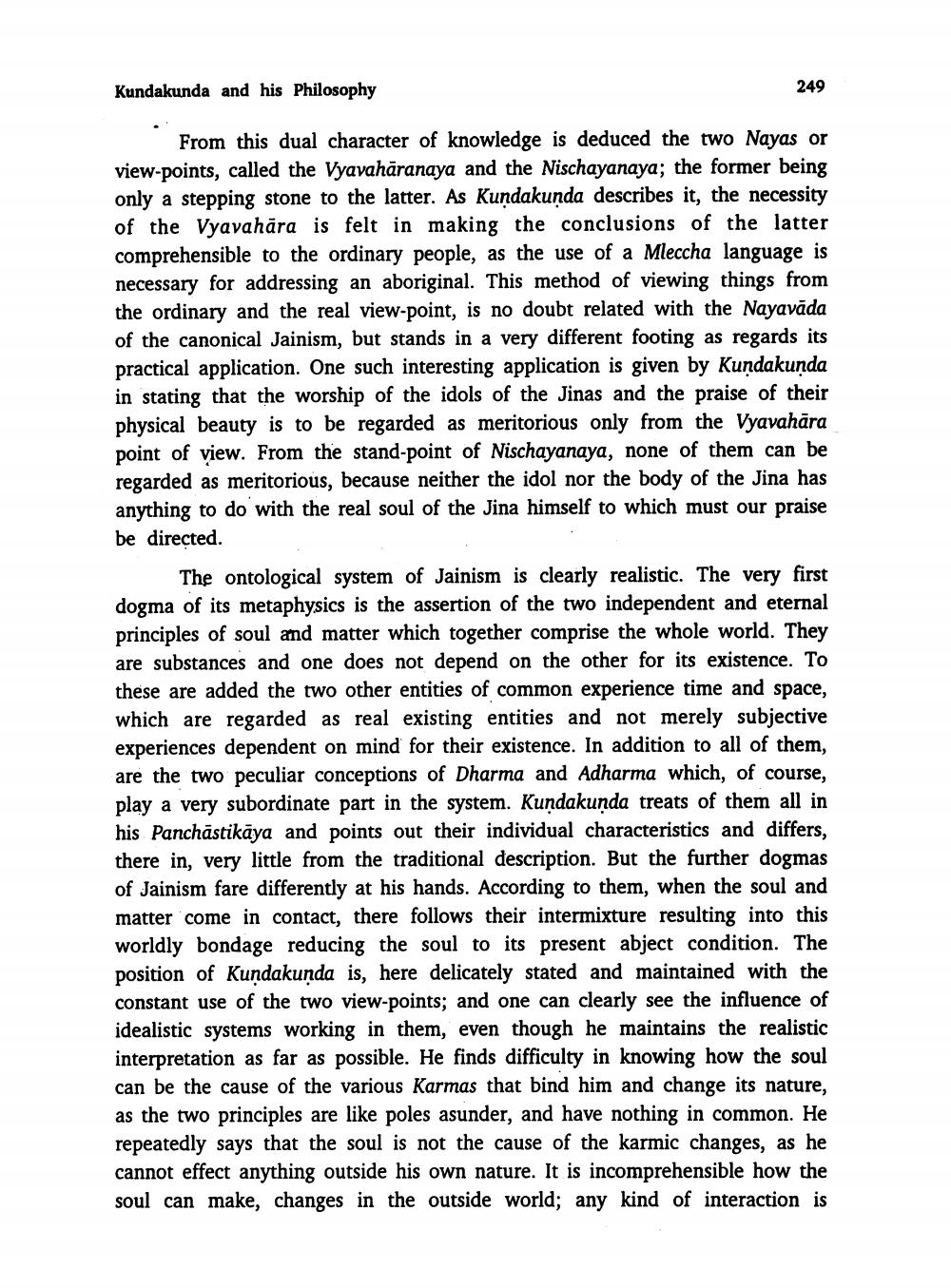________________
Kundakunda and his Philosophy
249
From this dual character of knowledge is deduced the two Nayas or view-points, called the Vyavahāranaya and the Nischayanaya; the former being only a stepping stone to the latter. As Kundakunda describes it, the necessity of the Vyavahāra is felt in making the conclusions of the latter comprehensible to the ordinary people, as the use of a Mleccha language is necessary for addressing an aboriginal. This method of viewing things from the ordinary and the real view-point, is no doubt related with the Nayavāda of the canonical Jainism, but stands in a very different footing as regards its practical application. One such interesting application is given by Kundakunda in stating that the worship of the idols of the Jinas and the praise of their physical beauty is to be regarded as meritorious only from the Vyavahāra point of view. From the stand-point of Nischayanaya, none of them can be regarded as meritorious, because neither the idol nor the body of the Jina has anything to do with the real soul of the Jina himself to which must our praise be directed.
The ontological system of Jainism is clearly realistic. The very first dogma of its metaphysics is the assertion of the two independent and eternal principles of soul and matter which together comprise the whole world. They are substances and one does not depend on the other for its existence. To these are added the two other entities of common experience time and space which are regarded as real existing entities and not merely subjective experiences dependent on mind for their existence. In addition to all of them, are the two peculiar conceptions of Dharma and Adharma which, of course, play a very subordinate part in the system. Kundakunda treats of them all in his Panchāstikāya and points out their individual characteristics and differs, there in, very little from the traditional description. But the further dogmas of Jainism fare differently at his hands. According to them, when the soul and matter come in contact, there follows their intermixture resulting into this worldly bondage reducing the soul to its present abject condition. The position of Kundakunda is, here delicately stated and maintained with the constant use of the two view-points; and one can clearly see the influence of idealistic systems working in them, even though he maintains the realistic interpretation as far as possible. He finds difficulty in knowing how the soul can be the cause of the various Karmas that bind him and change its nature, as the two principles are like poles asunder, and have nothing in common. He repeatedly says that the soul is not the cause of the karmic changes, as he cannot effect anything outside his own nature. It is incomprehensible how the soul can make, changes in the outside world; any kind of interaction is




